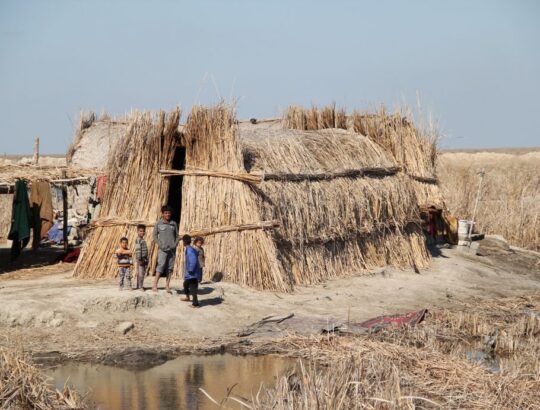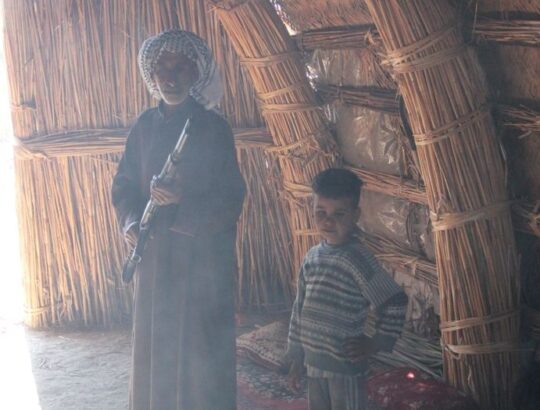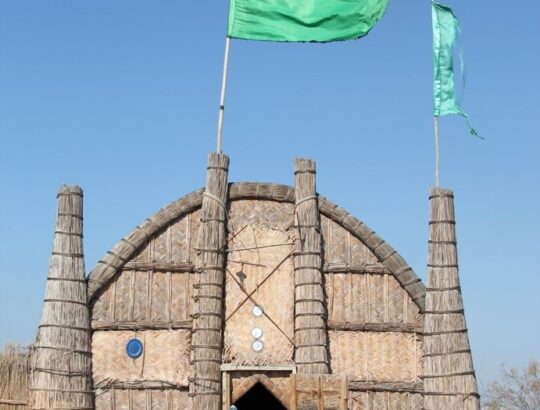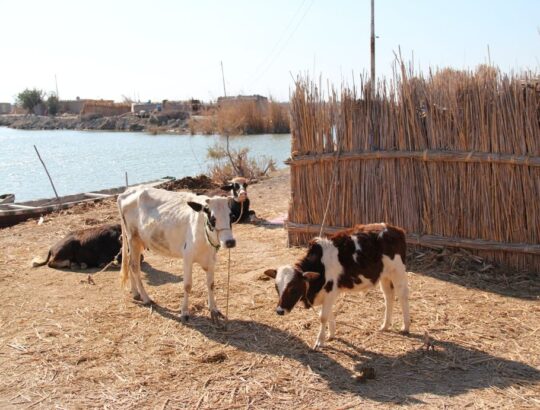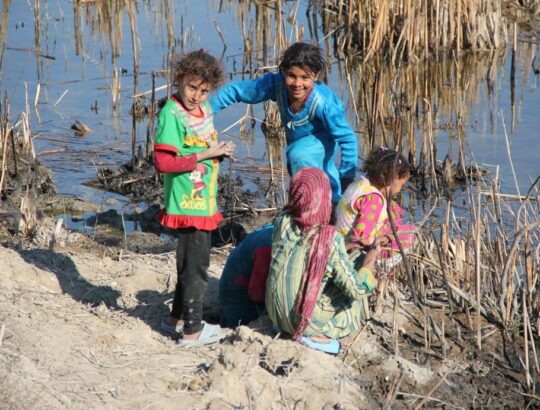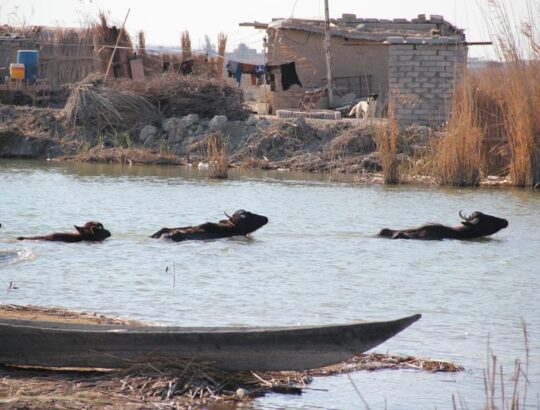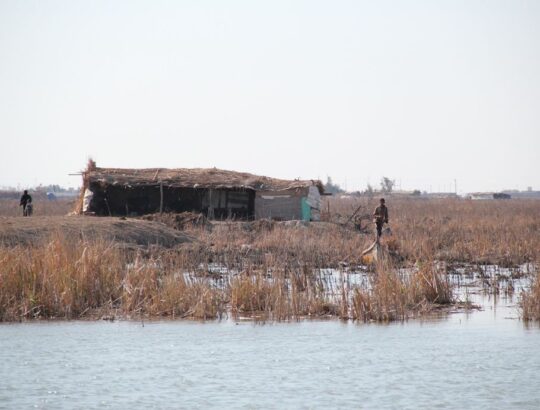Mesopotamian Marshes
The Mesopotamian Marshes or Iraqi Marshes are a wetland area located in southern Iraq and partially in southwestern Iran and Kuwait. Historically the marshlands, mainly composed of the separate but adjacent Central, Hawizeh and Hammar Marshes, used to be the largest wetland ecosystem of Western Eurasia. It is a rare aquatic landscape in the desert, providing habitat for the Marsh Arabs and important populations of wildlife.
The Marsh Arabs are the primary inhabitants of the Mesopotamian Marshes and are the descendants of ancient Sumerians, as their civilization dates back 5000 years. They live in secluded villages of elaborate reed houses throughout the marshes, often only reached by boat. Fish, rice cultivation, water buffalo and other resources are also used in their daily lives. In the 1950s, there were an estimated 500,000 Marsh Arabs. This population shrank to about 20,000 following the draining and Saddam's violent reprisals, and between 80,000 and 120,000 fled to neighboring Iran. Following the 2003 Iraq invasion, Marsh Arabs have begun to return to the marshes.

